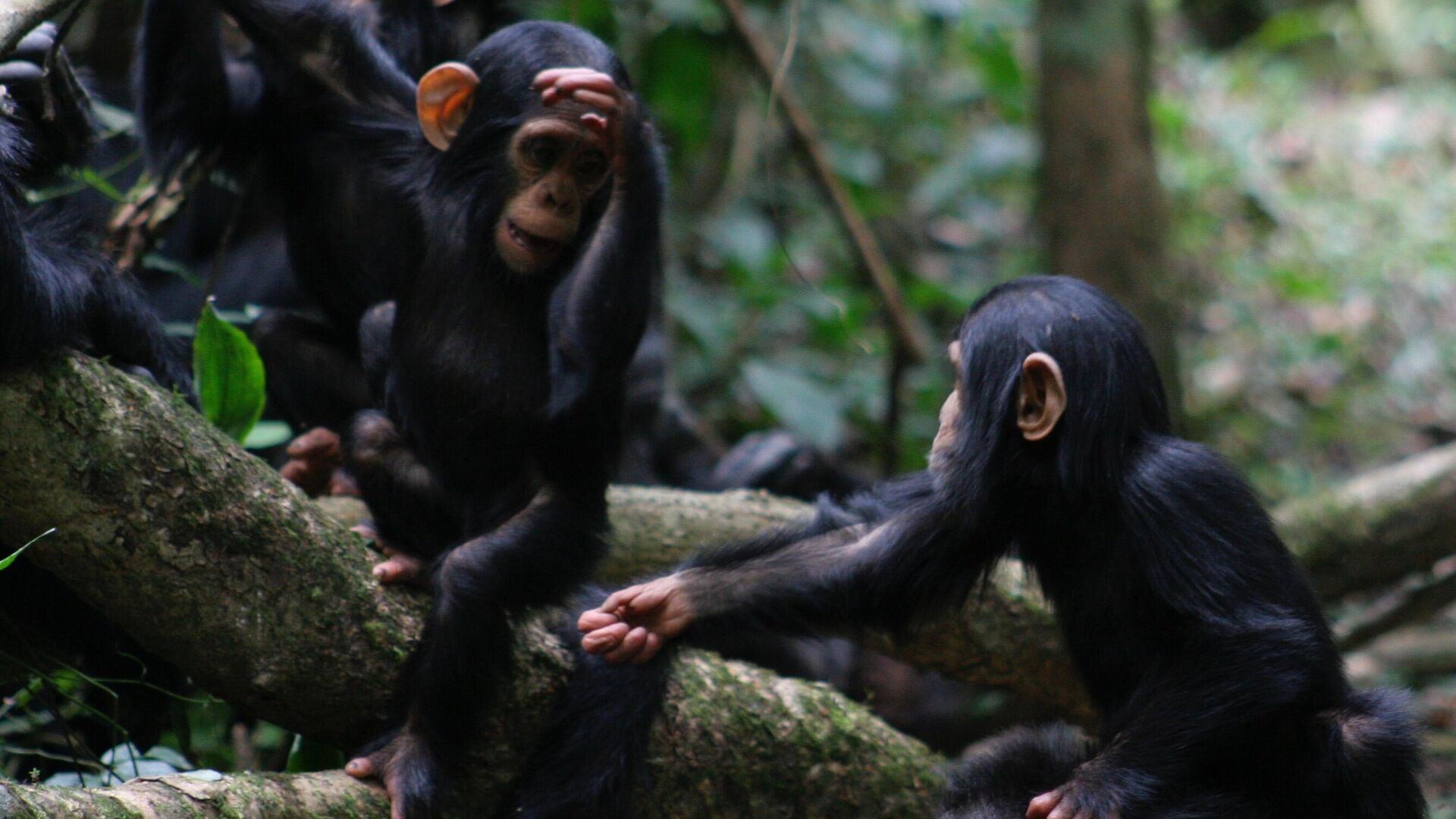
MOSCOW, February 5, Vladislav Strekopytov. A sign language familiar to all primates is “hardwired” into the human brain at the genetic level. Scientists came to this conclusion after testing more than five thousand volunteers on their ability to understand nonverbal signals that chimpanzees and bonobos send to each other. According to researchers, these movements formed the basis of communication between our common distant ancestors.
Test for “humanity”
Apes are very similar to humans in their facial expressions and gestures. However, until now it was not clear to what extent the external similarity of a particular gesture coincides with the meaning that people attach to it. At first glance, it seems unlikely that we can understand the meaning of the movements of animals, even such evolutionarily close ones as the great apes. But the results of a recent study suggest otherwise.
Scientists from the Scottish University of St. Andrews spent several years observing the behavior of great apes in the wild and compiled a dictionary consisting of more than 80 gestures, the meaning of which was determined. Many are also characteristic of other primates, including humans. But the authors were more interested in the question of how people can intuitively understand the meaning of those gestures that are not used today.
The researchers produced twenty short videos demonstrating ten fairly common gestures of chimpanzees (Pan troglodytes) and bonobo monkeys (Pan paniscus). And then they built them into an online game in which participants had to choose the meaning of the gesture from four proposed options. A total of 5,656 people were tested, and in more than half of the cases they correctly identified the meaning of gestures, even without knowing in what context the primates demonstrated them.
People liked the game so much that the authors decided to make it publicly available, and today everyone can can pass the «humanity» test. However, the results are no longer taken into account, since this stage of the study is completed.
The language of the ancestors
The ability of humans to understand the gestures of monkeys can be explained in different ways. For example, humans and other primates can interpret movement signals in the same way due to the similarity of the physical structure of the body and the structure of the nervous system, as well as the similarity of the social structure of life. However, the authors believe that the phenomenon has deeper roots. Once upon a time, the common ancestors of humans and monkeys used a unified system of nonverbal communication, and its key elements are still preserved at the genetic level.
It is interesting that children under two years of age, regardless of nationality and cultural background , use the same set of gestures, which roughly coincides with the “monkey” one. This was proven by one of the authors' previous studies.
Animal psychologists have traditionally used video experiments to test nonverbal language comprehension in primates. But this approach was first used to assess the ability of people to read the gestures of their closest animal relatives.
“The gesticulation and pantomime (body movements) of modern people are so diverse that it is very difficult to identify gestures common to all primates simply by observing people,” one of the study’s authors, Dr. Kirsty Graham, is quoted in a press release. “We went the other way, showing participants videos of typical ape gestures, and found that humans can understand these signs, which are part of an evolutionarily ancient common vocabulary of gestures for all ape species, including us.”
Here are just a few examples of the gestures included in the test and their interpretation. If a primate makes the “big loud scratch” sign, scratches its chest with its nails, it asks its loved ones to stroke it and take care of it. If he “wipes his mouth,” he asks to share food, and if he shakes a branch or other object, he offers to have sex.
«We expected «It was clear that humans would be able to understand these signals, but it was surprising that they completed the task without any additional information regarding the situation in which the monkeys use these gestures, what they did before, what the relationship was between them,» Graham says. “After we gave participants this information, understanding improved only slightly—by about five percent.”
From this, the authors conclude that it is the gestures themselves that matter, which obviously relate to the basic communication system which our ancestors, common to other higher primates, used about six to seven million years ago, even before the advent of complex human language.























































Свежие комментарии